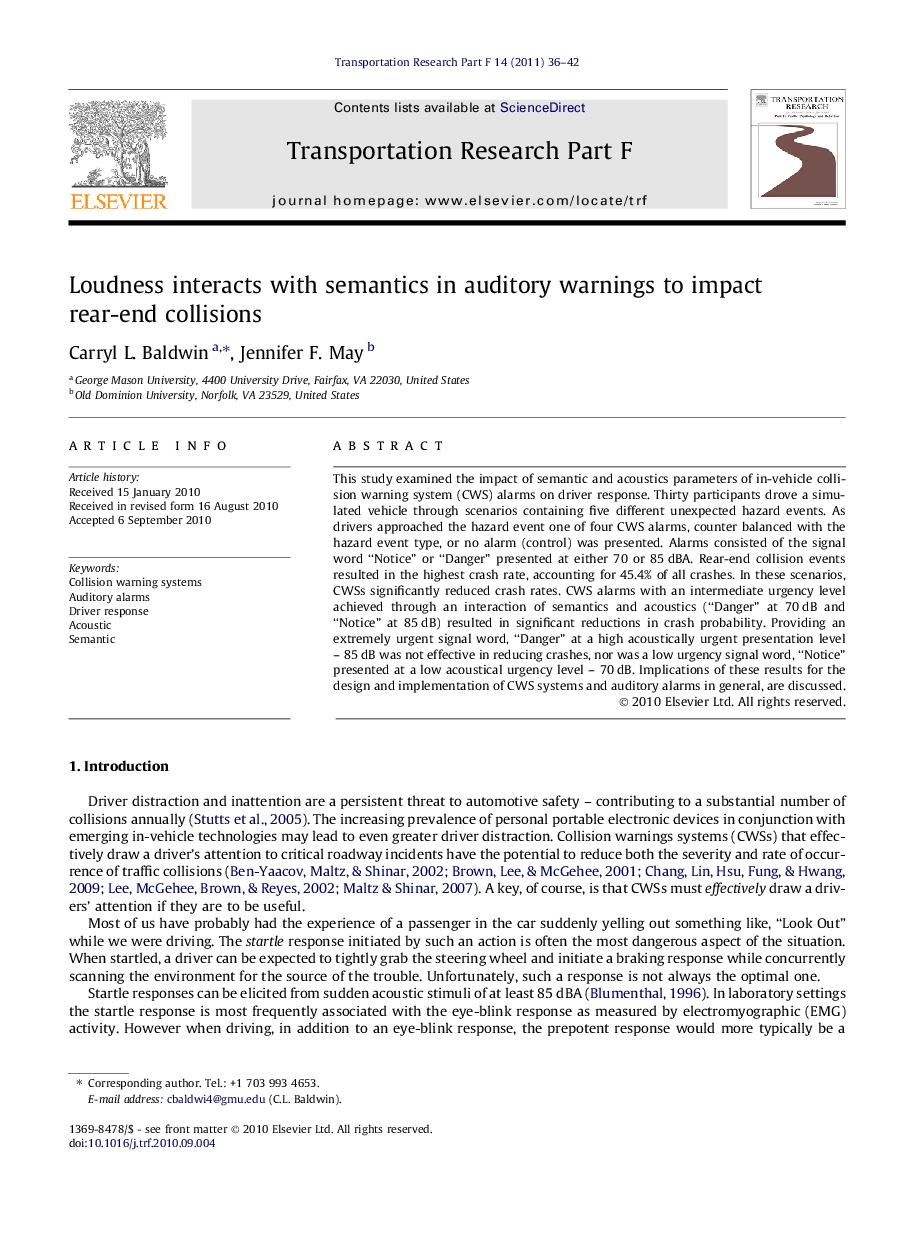| کد مقاله | کد نشریه | سال انتشار | مقاله انگلیسی | نسخه تمام متن |
|---|---|---|---|---|
| 897991 | 915216 | 2011 | 7 صفحه PDF | دانلود رایگان |

This study examined the impact of semantic and acoustics parameters of in-vehicle collision warning system (CWS) alarms on driver response. Thirty participants drove a simulated vehicle through scenarios containing five different unexpected hazard events. As drivers approached the hazard event one of four CWS alarms, counter balanced with the hazard event type, or no alarm (control) was presented. Alarms consisted of the signal word “Notice” or “Danger” presented at either 70 or 85 dBA. Rear-end collision events resulted in the highest crash rate, accounting for 45.4% of all crashes. In these scenarios, CWSs significantly reduced crash rates. CWS alarms with an intermediate urgency level achieved through an interaction of semantics and acoustics (“Danger” at 70 dB and “Notice” at 85 dB) resulted in significant reductions in crash probability. Providing an extremely urgent signal word, “Danger” at a high acoustically urgent presentation level – 85 dB was not effective in reducing crashes, nor was a low urgency signal word, “Notice” presented at a low acoustical urgency level – 70 dB. Implications of these results for the design and implementation of CWS systems and auditory alarms in general, are discussed.
Research highlights
► Auditory collision warning system (CWS) alarms can reduce crash probability if designed to convey appropriate hazard levels.
► Semantic and acoustics parameters of in-vehicle collision warning system (CWS) auditory alarms interact to effect driver response.
► Inappropriately hazard matched auditory warnings (extreme urgency or very low urgency) are ineffective.
► Auditory warning context impacts behavioral response and ratings of perceived urgency.
► The signal word “Notice” presented at a relatively high acoustic intensity of 85 dB and “Danger” presented at a relatively low acoustic intensity of 70 dB resulted in equal crash reduction probability and were perceived as having equivalent urgency levels.
Journal: Transportation Research Part F: Traffic Psychology and Behaviour - Volume 14, Issue 1, January 2011, Pages 36–42